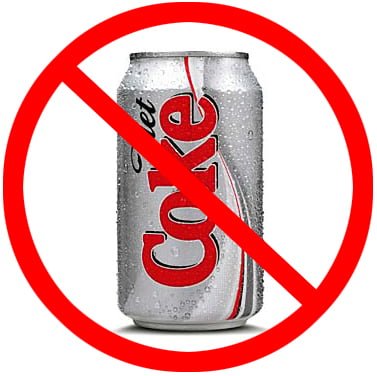 Years ago, this type of decay was seen in patients who kept candy, mints, or other edible breath fresheners in their mouths for hours on end, causing decay at the gumlines of teeth. Although another factor or factors may be the actual or contributing causes of this problem, the only currently detected causes are the diet beverages -- soda and artificially sweetened bottled iced tea.
Years ago, this type of decay was seen in patients who kept candy, mints, or other edible breath fresheners in their mouths for hours on end, causing decay at the gumlines of teeth. Although another factor or factors may be the actual or contributing causes of this problem, the only currently detected causes are the diet beverages -- soda and artificially sweetened bottled iced tea.Sugar in food and drink feeds the bacteria present in dental plaque, allowing the bacteria to produce lactic acid. The lactic acid breaks down the minerals in the tooth enamel, which causes cavities. Although diet drinks are sugar-free, they are also very acidic. This acid also breaks down the minerals in the tooth enamel, causing cavities. By the time the saliva dilutes these acids enough to bring the mouth back to its proper acidity, new or additional decay may already be in progress. Or worse, before the mouth does recover its proper acid balance, the patient is already uncapping another bottle of that diet drink!
Suggestions for the reduction or elimination of this type of decay include reduction or cessation of the drinking of these diet drinks, rinsing your mouth with water as soon as possible after the beverage contact, use of fluoride mouthrinses, and stronger prescription topical fluoride treatments both in the office (four times each year) and at your home. We may even need to recommend the use of special fluoride delivery trays to increase the time that fluoride can remain in contact with the teeth. This will help make the enamel of the teeth stronger to resist the acid attack that starts decay. It will also promote a better equilibrium in the constant enamel demineralization/remineralization process that occurs in everyone's mouth. Decay lesions in the very beginning stages can be stopped and even reversed in this way.
Though most of us could stand to lose a few pounds, be aware that some of the things you put in your mouth, in the hope of losing weight, may actually have an adverse effect of losing teeth.
If you have any questions about this accelerated decay, please feel free to ask us at Omni Dental Group! http://omnidentalgroup.com
Article courtesy of: "Dental Practice Tool Kit: Patient Handouts, Forms, and Letters," 2004, Elsevier Inc, St. Louis, Missouri

No comments:
Post a Comment